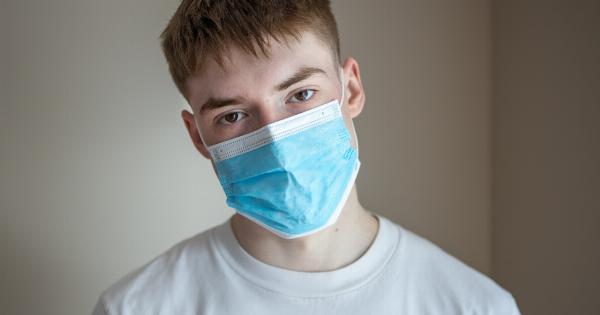Breast cancer is a serious disease that impacts hundreds of thousands of women every year.
While many treatments are available, including radiation, chemotherapy, and surgery, mastectomy is the most effective preventative surgery for women with a high risk of breast cancer.
Preventive mastectomy, also known as prophylactic mastectomy, is a surgical procedure that removes one or both breasts to reduce the risk of developing breast cancer.
For women who have a strong family history of breast cancer or who have the BRCA1 or BRCA2 gene mutations, preventive mastectomy may be a viable option.
Who is at Risk for Breast Cancer?
Knowing your risk factors is an essential step when it comes to breast cancer prevention. The most significant risk factor for developing breast cancer is being a woman – men can get breast cancer too, but it is relatively rare.
Other factors that could increase the risk of breast cancer include:.
- A personal history of breast cancer or certain noncancerous breast diseases
- Family history of breast cancer in a first-degree relative (parent, sibling, or child)
- Having certain gene mutations such as BRCA1 or BRCA2
- Previous radiation therapy exposure to the chest for cancer treatment before the age of 30
- Beginning menopause after the age of 55
- Hormonal contraception or hormonal treatments that include estrogen and progesterone
What is Preventive Mastectomy?
Preventive mastectomy is an operation that removes one or both breasts to decrease the risk of developing breast cancer. There are two types of preventive mastectomy:.
- Single mastectomy: Only one breast is removed.
- Double mastectomy: Both breasts are removed
The decision to remove one or both breasts is a personal one. Some women feel that removing both breasts is necessary, while others may opt to have only one breast removed.
The choice of procedure strongly depends on personal circumstances, including the patient’s breast cancer risk level, personal feelings and preferences, medical history, and risk tolerance.
Who is a Good Candidate for Preventive Mastectomy?
If you have a high risk of developing breast cancer, your doctor may recommend preventive mastectomy. You may be a good candidate for preventive mastectomy if:.
- You test positive for a BRCA1 or BRCA2 mutation.
- You have a family history of breast cancer in one or more first-degree relatives.
- You have a previous noncancerous breast biopsy showing abnormal breast cells.
- You have had radiation treatment to your chest before the age of 30.
What to Expect During Preventive Mastectomy
Preventive mastectomy is a complex surgical procedure that involves a team of healthcare professionals, including a breast surgeon, oncologist, and a plastic surgeon. The surgery typically takes around four hours to complete.
During the surgery, the breast tissue will be removed from the chest wall, including the nipple and areola. The surgeon will then insert an implant or use tissue from other parts of the body to create a new breast.
This process is called breast reconstruction and is typically done at the same time as the preventive mastectomy.
After surgery, you will need to stay in the hospital for one to three days. You can expect some pain and discomfort as well as swelling for the first few days after the procedure. You may need to wear a support bra throughout the recovery process.
Depending on the procedure, drains may be placed in the chest to remove excess fluid. These will need to be emptied regularly.
Recovery from Preventive Mastectomy
The recovery period from preventive mastectomy can take a few weeks to several months, depending on how well the breasts heal. Patients are encouraged to take it easy and avoid strenuous physical activity for the first few weeks post-surgery.
Patients may experience fatigue, discomfort, and limited range of motion for a few weeks. Pain medication can be taken to help manage pain during the recovery period. Patients can slowly return to their daily routine once their doctor approves them.
Emotional Effects of Preventive Mastectomy
Preventive mastectomy can be a stressful, emotional time for many patients. A feeling of loss, physical changes, and an awareness of mortality can impact a patient’s emotions and can cause depression and anxiety.
For this reason, patients may need to seek emotional support from family, friends, or a health professional.
Preventive Mastectomy and Breast Cancer Prevention
Preventive mastectomy can reduce the risk of developing breast cancer by 90% for high-risk women. It is one of the most effective ways to prevent breast cancer for those who are at a higher risk.
However, it’s important to remember that mastectomy is not a guarantee of breast cancer prevention. A small amount of breast tissue may still remain after the procedure, which can lead to a small risk of developing breast cancer in the future.
When to Talk to Your Doctor
If you are wondering if preventive mastectomy is right for you, it’s essential to schedule an appointment with your doctor. They can assess your risk of breast cancer and help determine if preventive mastectomy is the right option.
Remember, each patient is different, and the decision to undergo a preventive mastectomy is a personal one. Always make an informed decision and talk with loved ones and healthcare professionals before proceeding with the surgery.
Conclusion
Preventive mastectomy is a surgical approach to reducing breast cancer risk among high-risk women, including those with strong family histories of breast cancer and BRCA gene mutations.
The procedure can help prevent breast cancer by removing most of the breast tissue from the chest. While the personal decision to undergo preventive mastectomy can be a challenging one to make, it is an effective method of reducing the risk of developing breast cancer.















